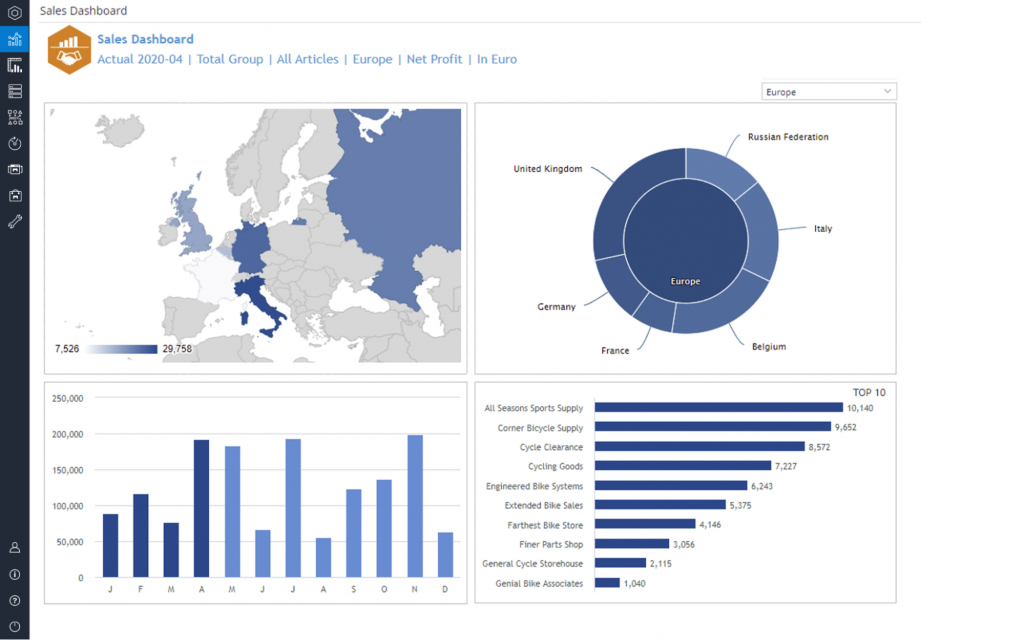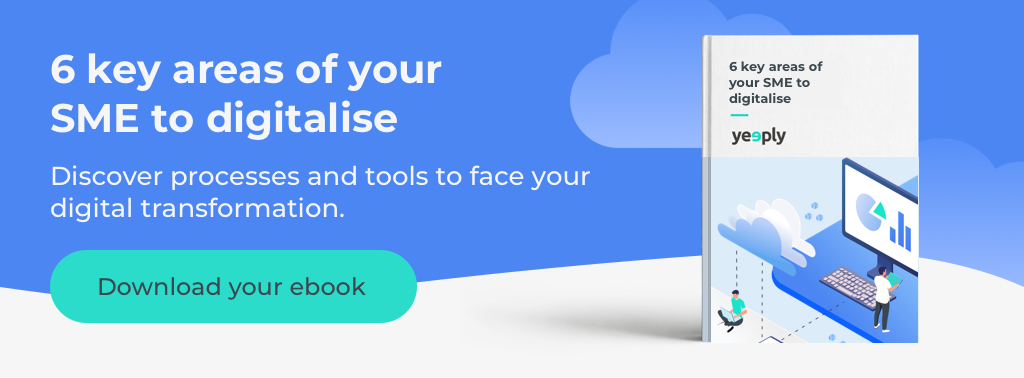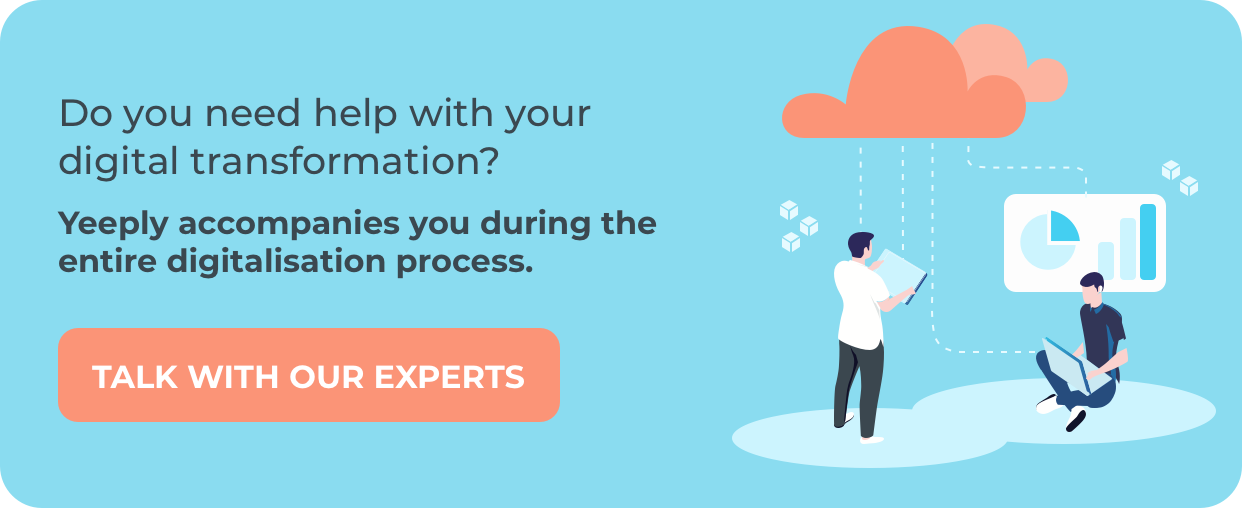Spokesperson Name: Beatriz Núñez de la Hoz
Position: Enterprise Solutions Director at Quental Technologies
Introduce yourself in one sentence.
Professional with more than 15 years of experience in the ICT sector, covering both economic-financial responsibilities and business development. Acting as Business Partner of the General Management.
What is your area of interest?
- Strategic planning
- FP&A
- Cost control and operations analysis
- Dashboards
- Accounting and compliance
- Business development
- Consulting
I have extensive experience in the implementation of ERP’s, in the establishment of regulations and workflows, and in the development of reporting systems, both management and financial, at the local and corporate level.
✏️ Recommended article | What is an Enterprise Performance Management (EPM) solution for companies?
Speaking of Finance, tell us in your experience what are the main trends in Planning and Analysis (FP&A).
The trends that are going to affect the Finance team in the coming years can be summed up in one word: automation.
The key to dealing with the complexity and uncertainty that we have been plunged into after this pandemic is for companies and FP&A teams to adopt planning tools to quickly model different scenarios.
It is about preparing for a range of possible outcomes, the likelihood of each outcome, and developing corresponding strategies to maximize long-term benefit.
I am convinced that automation will increasingly replace manual tasks to allow users to spend their time on more strategic and value-added tasks.
What if the principles applied to FP&A go beyond the Financial department?
Traditional FP&A focuses solely on the financial planning and analysis aspects of the business: Budgeting, Planning, Forecasting and Analysis.
While it is an essential function for any organization, working in this way only creates a disconnection in the other areas of the business (such as operations, human resources, and marketing).
By applying the same FP&A principles and methodologies to the rest of the organization, companies gain unity across functions and have access to standardized and transparent data to operate more efficiently and effectively.
When forecasters from different departments can collaborate with a single, unified database, they see and understand how activities across functions interrelate with each other.
This allows departments to identify opportunities, uncover “pain points” and see more clearly the ripple effect of their decisions.
The result is better decisions and better insights throughout the organization.
What exactly is EPM and what is the most important thing for companies to know about it?
The Enterprise Performance Management (EPM) is a tool that allows the integration of different management methods to improve the strategic and operational performance of the organization: predict, monitor, manage and understand the impact of decisions on results , connecting strategy with planning and execution.
Until very recently, measuring company performance took a great deal of effort and time. The process incurred delays, which limited the accuracy and usefulness of its results.
All of this can now be achieved much more easily thanks to EPM.

What would you highlight most about EPM software tools and what advantages do you think they bring to companies?
In my opinion, the fundamental characteristic of an EPM software is that it provides a holistic view of the organization and allows for scenario planning.
Due to the difficulty of measuring the performance of companies, all measurements end up focusing on one key indicator: financial results.
But while financial planning and analysis results represent a key performance characteristic, focusing solely on this measure provides an incomplete and sometimes misleading picture of an organization’s overall performance, sometimes leading to poor decision-making.
Instead, the EPM represents a true “management system” that encompasses all areas of the company under a strategy and a shared vision through a common language.
I think that is exactly the main advantage of EPM: it encompasses the entire organization, including finance, operations, HR, sales, marketing, purchasing, etc…
Related article | Interview with Héctor Badal (Yeeply) – How to take advantage of Digital Transformation in the post Covid-19
Who, within a company, should be in charge of implementing an EPM solution?
As I have said, one of the main characteristics of EPM software is that it is a tool that can be adopted across the entire organization.
The new CFO is becoming heavily involved in the digital transformation of his company and should be asking himself how we can take advantage of the tools that technology has brought us to move further up the value chain.
But for it to be effective, the CFO must play an active and strategic role. While the process is based on input from all areas, it is the CFO’s job to ensure the accuracy of those projections and resolve any inconsistencies.
Keep reading | What is the Financial Function 4.0 and how can it help the CFO of a company
With the EPM methodology, short, medium or long term?
In my experience working in the FP&A area I have suffered long hours of gathering information, and making forecasts of activity and results for the next quarter, year or even three and five year plans.
The forecasts made during the budget cycle became less and less accurate as the time between planning and execution increased. It was dued to lengthy manual processes that required constant corrections and revisions.
EPM solutions allow for both long- and short-term scenario planning.
Since the pandemic hit, it has become more evident that traditional budget cycles cannot help us in times of rapid change. The change has impacted the way companies plan today: they are running rolling forecasts, operating in an agile way, and probably doing scenario planning.
So the tool is optimal for any kind of time horizon and able to be re-planned in case something suddenly changes.

The EPM includes actions related to Data Science and Business Intelligence. What benefits do they have for companies?
We have said that the unification of data from different departments is essential. The problem is that data collection is one of the biggest challenges finance teams face.
BI software places heavy emphasis on data investigation and provides real-time analytics for ad-hoc queries, online analytical processing (OLAP), and predictive forecasting modeling to transform raw data into actionable and meaningful insights for leadership.
As a result of BI analysis, a company may decide to change its goals or objectives, and EPM software helps monitor the progress of strategic initiatives based on these decisions.
Could you provide us with an example of an EPM application in companies?
SFM success story: https://www.jedox.com/en/customers/sfm-quental/
Give advice to all those who think of implementing this methodology in their company.
To successfully implement this methodology it is essential to have the support of the company’s management and a communication strategy for the entire organization.
Management must be aware of the enormous benefits that EPM solutions can provide by having a single source of information updated in real time. In such volatile environments as the current ones, being able to carry out fast simulations and share the information with all the company’s decision makers is essential.
Furthermore, communication should provide teams with the information they need to understand the overall goal and scope of the project. For example their intended involvement/responsibilities throughout the project life cycle.
Another point to consider prior to an implementation is the data. Data is one of the most common barriers to success in an EPM software implementation. Conducting an analysis of the current state of the data before starting the implementation is key. It will allow to obtain a true understanding of the data that is available. Where is it? Quality? Is it difficult to access?
Recommend us a blog or portal to stay up to date on EPM and other related technologies.
These are the sources of information that I consider most reliable on the subject of EPM.






